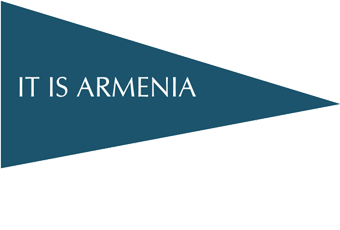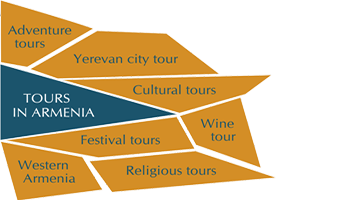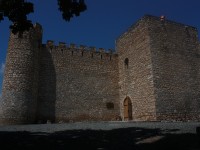Tigranakert
Tigranakert is an ancient settlement and the ancient Armenian city in Martakert region of Nagorno-Karabakh, on the right bank of the river Khachen. The city was built by the Armenian king Tigran the Great, in the 1st century BC. Tigranakert, as a settlement, existed for about 1,500 years. Since 2006, the excavations have been conducted here. The citadel of the city, the fences, the central part of the city and the Basilica Church of the early Middle Ages were discovered and investigated. The city is mainly built of white limestone. In May 2010, the archaeological museum was opened in the fortress of the late epoch, located in the territory of Tigranakert, which represents the exhibits discovered during the excavations to the visitors. The traces of various medieval workshops were found in the central part of the basilica church. Archaeologists found traces of stained glass workshop, was excavated a large collection of glass and shards of 30-40 bracelets were found. Most of the bracelets are of the 12-13's centuries; bracelets were very common that time. The shards of glass mosaic were found during the excavations. The archaeologists also found a large collection of glazed ceramics with images of different plants and birds in the territory of Tigranakerta. The perfect samples of colored, black and grey ceramic that date back from the first century BC to the first century AD are distinguished among the excavated artefacts. There were also founded, horns, prints and gems, clay plate with Armenian inscriptions in the basilica, early medieval glass, and glass-plated ceramics of the 9th-11th centuries. Two graves were excavated in Tigranakert’s ancient cemetery, and in one of them, pitchers were found with delicate illustrations and metal rings. They were decorated with stones and gilt earrings. Well-preserved silver coins from the mid-first century BC were also discovered. Three kilometres from Tigranakert, on the right bank of the Khachen River, there is a series of caves consisting of a church carved in the depths of a rock, an entrance hall, and cemeteries. A long path, carved like a staircase into the rock, takes you to this complex. The walls are decorated with cross compositions and Armenian and Greek inscriptions. The cross compositions depicted on the cave complex are one of the typical lines of early Christian culture. Crosses are set on high stairs and poles, are included in the ornamented frames and have Greek monogram of Christ, accompanied by floral and bird motifs, symbolizing the victory over death, salvation and heaven.

















